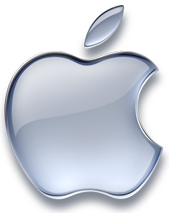|
Who’s Doing this?
There are some people out there who know this, e.g. Apple, Google, IBM, McDonalds, Coca Cola, AT&T, Marlboro, China Mobile, Disney, Microsoft are starting to see the light too. In fact in 2011, 8 out of the 10 world leading companies are classed as Outside-In, Microsoft have a mixed model so we don’t count them but if we did it would be 9 out of 10. You would think that more people would take notice of this. The problem is there are some people who have made very successful careers on this old industrial age thinking and therefore are not willing to accept that everything has changed and they need to as well. Funny thing is, they will have to change sooner or later, it’s their choice how they change however. A) Go Outside-In. B) Go Bust. Don’t get hung up on the name ‘Outside-In’ lots of people call it different things, and it’s not the name that’s important, it’s the philosophy behind it. How are they doing this? So what do these guys know that I don’t? Let’s look at a few key points to start thinking Outside-In and actually drive significant business improvement even when you have already optimised using traditional techniques. 1) Everything is process. There is not a single thing that happens in a company that is not process. ‘I’m in Marketing, I don’t do process’ that’s a process. ‘I’m in Finance, I don’t do process’ It’s all process and the faster you realise this, the better. 2) The Customer Experience is the Process. Forget about departments, forget about functional specialist silos, when looking at process, treat the customer experience as the process, also redefine where the process starts and finishes, this gives you a whole load more scope than before and opens you up to a whole new world of opportunities. 3) Align all Process to a Successful Customer Outcome (SCO). If you are doing something that does not contribute to customer success most of the time there is no need to be doing it. Figure out what the customer need it and align to this. You will find there are big chunks of process that will disappear overnight. 4) Drive out Points of failure. 'Moments of Truth' happen whenever there is a customer interaction, the less of these the better, they cause work and are the places where things can go wrong, figure out how to ‘Remove or Improve’ these. 'Break Points' are the internal handoffs and interactions, again these cause more work and can start to mess up what’s going on, if the internal work isn’t directly contributing to the SCO get rid of it, why do it? 'Business rules' are the rules that have been put in place to make sure you keep things as they are these usually cause a lot of the internal handoffs and customer interactions and most of the time there is no need for them to be there, ask yourself ‘Why do I have to do it this way?’ and if there isn’t a good enough reason to back up the rule, chuck it out! Looking at things in a different way completely changes how we do business, driving out Points of Failure improves customer experience, and reduces cost, this paired with looking at the customer experience at the process (that gives you more opportunity to make money) will grow your revenue. Achieving these three things simultaneously is known as the Triple Crown and only Outside-in companies can do this because the old Industrial age way of thinking only moves the pain about and improving one (Revenue, Cost or Experience) will directly affect the others in a detrimental way. Innovation by Design In conclusion, thinking this way makes innovation a natural by-product and having an Outside-in company with every one knowing these techniques and philosophy is the only way to foster a culture of innovation throughout a whole organisation. So how do you drive significant business improvement when you have already optimised using traditional techniques? Dump the traditional industrial age ‘classical’ thinking techniques and think Outside-In.
4 Comments
The Change
There has been a seismic shift in the world and it has changed beyond belief since 1776: The way we communicate, the way we make music, the way we make television and films, the way we travel, the places we can travel to and technology has changed with this to keep up with our ever evolving demands. The one thing that hasn’t changed is how we do process and how we organize our business. Now I can hear some of you scoffing and remarking ‘Er, yes we have changed how we do process, look at TQM, BPI, BPR, Six Sigma, Lean, BPM…you’re talking rubbish James’ and where as I agree we have changed techniques around process, we have not changed the foundation that they were based on. It’s like we have had a house for a very long time and we keep having more and more kids. We expect the house to be able to handle this so to make living conditions better we decide to keep paining the walls different colours and saying ‘Look guys, its completely different.’ We need to fundamentally evolve how we think to keep up with the massive change that’s happened and wake up to the fact that everything has changed except how to do process and organise ourselves. Lean, Six Sigma and the Glass Ceiling Now let’s look at the traditional ways to drive business improvement. Six Sigma was all the rage and still is the ‘only way to go’ for some process professionals, especially after Jack Welch’s success using this at GE. The thing is, if a big company is in a big mess then Six Sigma will make things look better. It may seem like there has been significant improvement however you will tend to find that the technique will have been applied to one process, or a process in one area and rather than fixing the cause of the problem it will fix the effect. If you fix an effect it will only happen again or move the pain elsewhere as the cause is very much still there. Also listening to ‘The Voice of the Customer’ is a waste of time, we don’t need to provide what they want, we need to provide what they need. We as customers are inept at conveying what we need, it just doesn’t happen. For example I didn’t know I needed an iPhone or an iPad before they were invented…I very much need them now. The easiest way to think about it is if you ask a child what they ‘want’ to eat, imagine the responses you will get. Rather than doing that we figure out what they ‘need’ to eat and provide that, however we don’t translate this ‘want vs. need’ thinking to business. GE’s inside-out thinking is causing them to be overtaken by the smarter Outside-In companies as are Toyota, Toyota in fact have moved from 14th in the world down to 27th in the world in brand value[i] but apparently that doesn’t matter let’s still use their techniques, that’s a smart idea. If we look at Lean we talk about ‘waste’ and how to eliminate it. This is still very much industrial age or ‘classical’thinking. If I was making a table in a factory there would physically be‘waste’ wood to eliminate however in a service, for instance a Mortgage application, the ‘waste’ that is talked about does not physically exist so we are focusing our efforts on an imaginary entity applying manufacturing process techniques to a service company. Ask yourselves now, How much of my work is manufacture? Why do I think about it all‘left to right’ like a production line? Using these techniques you will get improvements, definitely, no doubt whatsoever. However using these techniques you will quickly hit a glass ceiling where you can go no further, definitely, no doubt whatsoever. This is all Inside-Out thinking. There’s every chance you are optimising a process that doesn’t need to be there. You might be doing things right…but are you doing the right things? Part 3 Soon... [i]Millward-Brown Optimor Annual Brand Survey 2011  I recently saw some stories about how Apple are planning to provide American schools with iPads so that the old, expensive, outdated, dog-eared, back breaking text books could be condenced to iBook format to make learining easier and more interactive and not to mention more cost effective. There was a lot of talk about this being a charitable dedication towards a nations education. This may hold some truth, however I disagree that this is the main reason for doing this. I personally think it may be one of the biggest game changing plays of the decade. In Ouside-In companies, like Apple, we ask ourselves a number of questions to reframe how we think and drive innovative ideas. One of these is: ‘Where does the process REALLY start?’ I think that this is a brilliant stratagy to sell more Apple Macs and MacBooks and well and truly sink Windows. So lets ask ourselves, when we buy a computer – where does the process REALLY start? When we walk into the shop? When we browse online for reviews? When we first discover the need for a computer? Or even further back – When we first start to use computers on a regular basis…in school. So you may be thinking, ‘WOW, great insight James! How does this help me sell more Macs?’ Lets think this through, most school computers are on Windows so most kids get used to Windows operating systems from an early age and so when buying a computer later in life for themselves (or when their parents do) they will stay with what they know - Windows. So… if Apple can get a whole generation and generations to come hooked on Apple’s operating systems from the start, then when they make the decision to buy for themselves they will go with what they know – Apple! On top of this there has been talk of giving every kid in America a free iPhone 3, another ploy to get the future generations hooked on Apple (they don’t make their money from phones anyway, they make it from the app store) This proves grim news for Nokia too but ill talk about this another day. So in summary, on one hand a charitable dedication to the advancement of learning on the other hand possibly one of the biggest game changing business moves we are likley to see this decade. What do you think? |
Outside-In
|



 RSS Feed
RSS Feed
